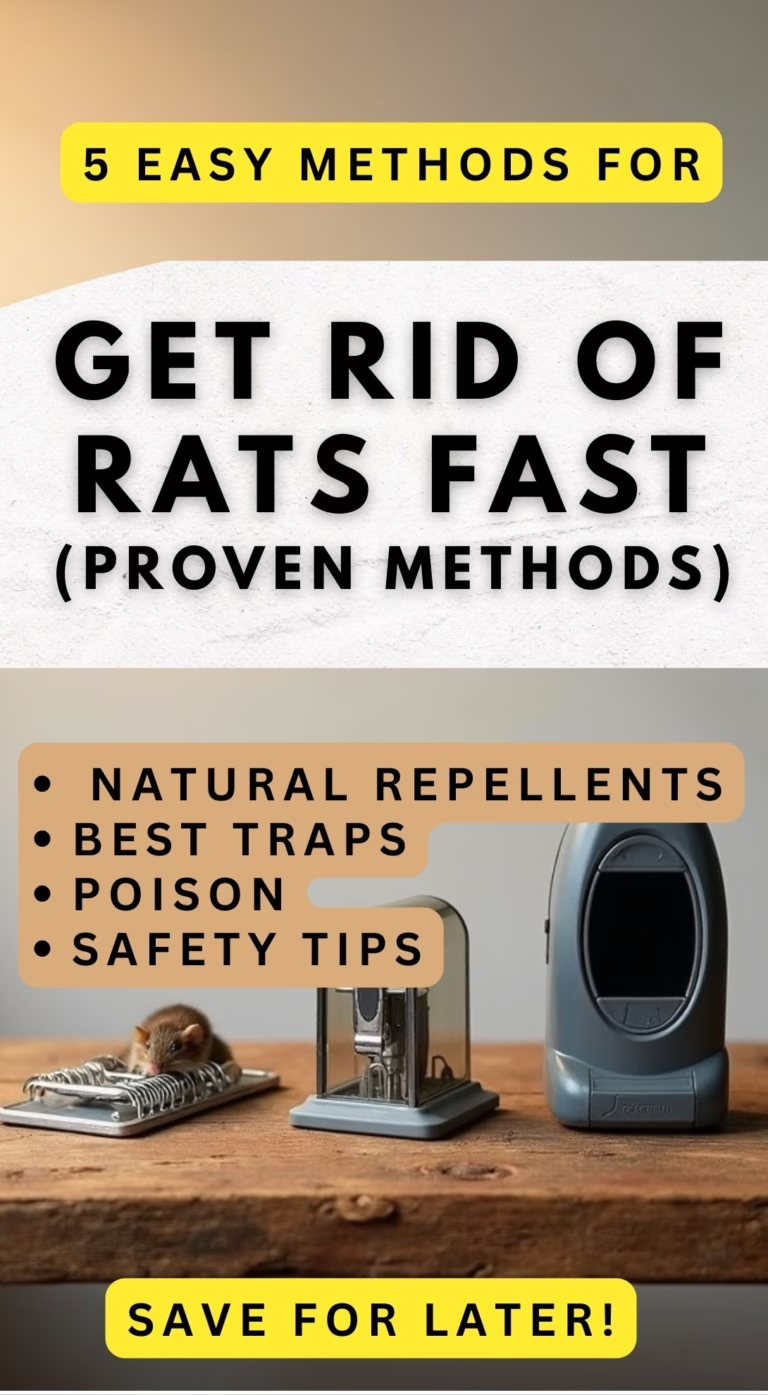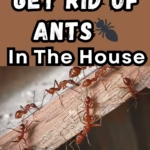Rats are one of the most common and troublesome household pests. Not only do they cause property damage by gnawing on wires, furniture, and insulation, but they also pose serious health risks by spreading diseases like Hantavirus, Salmonella, and Leptospirosis. If you’ve noticed signs of a rat infestation—such as droppings, gnaw marks, or scratching noises—it’s crucial to act quickly.
This comprehensive guide will cover every possible method to get rid of rats from your home, including prevention tips, natural remedies, traps, poisons, and professional solutions.
Signs of a Rat Infestation
Before tackling the problem, confirm that you’re dealing with rats. Common signs include:
- Droppings – Small, dark pellets near food sources or nesting areas.
- Gnaw Marks – On food packaging, wires, wood, or plastic.
- Scratching Noises – Especially at night in walls, ceilings, or under floors.
- Grease Marks – Oily smudges along walls from their fur.
- Nests – Made of shredded paper, fabric, or insulation in hidden areas.
- Unusual Pet Behavior – Dogs or cats may act agitated near rat hiding spots.
Step-by-Step Guide to Get Rid of Rats
1. Prevention: Stop Rats from Entering Your Home
The best way to deal with rats is to prevent them from getting inside in the first place.
- Seal Entry Points – Inspect your home for gaps in walls, roofs, pipes, and vents. Use steel wool, metal sheets, or caulk to block holes.
- Secure Food Sources – Store food in airtight containers, clean spills immediately, and avoid leaving pet food out overnight.
- Proper Waste Management – Keep trash bins tightly closed and dispose of garbage regularly.
- Trim Vegetation – Overgrown bushes and tree branches near your house can provide access. Keep them trimmed.
- Fix Leaks – Rats are attracted to water sources, so repair dripping pipes and clogged drains.
2. Natural Remedies to Repel Rats
If you prefer non-toxic methods, try these natural deterrents:
- Peppermint Oil – Soak cotton balls in peppermint oil and place them near entry points. Rats hate the smell.
- Ammonia – Its strong odor mimics predator urine, scaring rats away. Place small bowls near nests.
- Onions & Garlic – Their pungent smell repels rats. Place slices near suspected entryways.
- Owl Feathers or Cat Litter – These signal predator presence, making rats flee.
3. Traps: Effective Ways to Catch Rats
Traps are a quick and humane (if using live traps) way to eliminate rats.
Types of Rat Traps:
- Snap Traps – Classic wooden or plastic traps that kill rats instantly. Bait with peanut butter, bacon, or dried fruit.
- Glue Traps – Sticky boards that trap rats, but these are considered inhumane.
- Live Catch Traps – Humane cages that capture rats alive for release far from your home.
- Electronic Traps – Battery-powered devices that deliver a lethal shock.
Tips for Using Traps Effectively:
- Place traps along walls (rats prefer to run along edges).
- Use multiple traps in high-activity areas.
- Check traps daily and dispose of dead rats safely (wear gloves).
4. Rat Poison (Rodenticides)
If the infestation is severe, poison may be necessary—but use with caution, especially around pets and children.
- Common Types:
- Anticoagulants (e.g., Warfarin, Bromadiolone) – Causes internal bleeding.
- Non-anticoagulants (e.g., Bromethalin, Cholecalciferol) – Affects the nervous system or calcium levels.
Safety Tips:
- Place poison in tamper-proof bait stations.
- Keep away from pets and kids.
- Monitor and dispose of dead rats promptly (they may carry secondary poisoning risks).
5. Ultrasonic Repellers
Electronic devices emit high-frequency sounds that irritate rats, driving them away. While some users report success, results vary.
6. Professional Pest Control
If DIY methods fail, consider hiring an exterminator. Professionals use:
- Advanced Baiting Systems
- Exclusion Techniques (sealing all entry points)
- Follow-up Inspections to ensure rats don’t return.
Cleaning After Rat Infestation
Once rats are gone, sanitize your home to remove health hazards:
- Wear gloves and a mask to avoid contact with droppings.
- Disinfect surfaces with a bleach solution (1:10 ratio).
- Wash fabrics in hot water.
- Dispose of contaminated food and clean storage areas thoroughly.
Long-Term Prevention Tips
- Regular Inspections – Check for new entry points periodically.
- Maintain Cleanliness – Avoid clutter where rats can hide.
- Use Rat-Proof Materials – Steel mesh, concrete, and metal barriers prevent chewing.
Conclusion
Getting rid of rats requires a combination of prevention, trapping, and sanitation. Start by sealing entry points, removing food sources, and using traps or repellents. For severe infestations, professional pest control may be necessary. By staying vigilant and maintaining a clean home, you can keep rats away for good.
Have you dealt with a rat problem before? Share your tips in the comments below!



